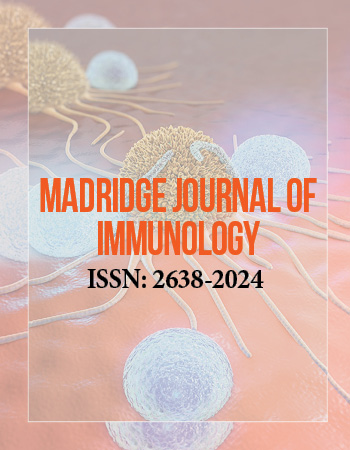International Conference on Immunology and Immunotechnology
November 1-3, 2017 Barcelona, Spain
Immunomodulatory Therapeutics from Phytochemicals and Novel Format Antibody in Ameliorating Ovalbumin-Induced Lung Inflammation
Immunobiology and Regenerative Medicine Research laboratory, Dept. of Zoology, University of Calcutta, India
Background: Asthma is a chronic allergic airway disease characterized by persistent inflammation and airway hyper-responsiveness. T cells, especially Th2 cells secreting IL-4, IL-5 and IL-13 are pivotal in orchestrating the disease process. Under the influence of chemo attractants and IL-5, eosinophils proliferate, migrate in to the lung, and are activated to secrete histamine and other mediators. IgE plays a major role in allergic disease by causing the release of histamine and other inflammatory mediator from mast cells. Presently, the most effective treatments are down regulation of the inflammatory process with corticosteroids. A more direct approach to stop the systemic reaction is to block IgE, via an anti-IgE. The serendipitous discovery of naturally occurring single chain antibodies in animals revived interest in these molecules. Our aim was to generate a single heavy chain antibody from Indian Camels (Camelus dromedarius) to ameliorate the disease of Ova specific asthma. Further we evaluated the potential activity of natural compounds like fisetin and curcumin mediated anti-asthma activity.
Methods: We used molecular biology techniques where single heavy chains were expressed in bacterial expression systems. At first, we immunized male Camel and B lymphocyte blood was isolated to isolate RNA. RT- PCR was carried out and cDNA was synthesized. The Variable domain of camelid heavy chain antibody fragments were isolated by nested PCR. Phage display technology was performed to select best clone for antigen specificity. We further developed ovalbumin induced chronic asthma in pre-clinical model (C57Bl/6) to test efficacy of anti-IgE. Mice were sensitized and challenged with OVA with adjuvant up to 55 days. We investigated Bronchoalveolar Lavage fluid (BALF), Histological analysis, measurement of gene expression by RT-PCR and Flow cytometry analysis. For drug treated groups, 5 MPK Fisetin and Curcumin was given intratracheally one hour before each intra tracheal challenge.
Results: Fisetin and Curcumin significantly reduced the numbers of infiltrating leukocytes in the airways of OVA-challenged mice, especially lymphocytes. Fisetin and Curcumin treated group Eosinophil significantly reduce 2.71 and 1.44 fold in blood whereas in Balf number of Eosinophils reduced 2.52 and 1.52 fold. Ova induced inflammatory cells and subepithelial collagen content around the bronchiloles and small vessels was detected by H&E, Massonʼs Trichrome stained paraffin-embedded lung sections. Further gene expression of IL-5, IL-13 and TGF-β significantly reduce 1.02,0,1.14 fold in case of Curcumin treated group whereas, Fisetin treated group reduced 1.27, 2.67 and 1.06 fold. More interestingly, CD45 cells become reduced in lung 1.84 and 2.72 fold in Curcumin and Fisetin treated group by Flow cytometry analysis.
Furthermore, we are developing anti-IgE antibody of Camelid format. We obtained VHH single chain antibody of 15 kDa protein in bacterial expression system. The small size allows for good tissue penetrability making them molecules of choice to combat lung diseases.
Conclusion: Both Fisetin and Curcumin reduce airway eosinophil trafficking and mucus hypersecretion as well as collagen deposition in a mouse model of Ovalbumin induce asthma. Expected administered with anti IgE single chain antibody will have the ability to drastically and rapidly reduce the local and systemic lung inflammation. The camelidantibodies will be potential and successful drugs against lung diseases (Asthma, COPD etc.) in the market as their high selectivity and affinity to their targets reduces the chances of side effects and the production will be also cost-effective.
Biography:
Dr. Ena Ray Banerjee is Professor of Zoology in University of Calcutta, India and heads the Immunobiology and Regenerative Research Unit of the department. Her interests are manifold but centered around translational outcomes research in life sciences by exploring biodiversity through bioprospecting and converting them into bioresources currency. Her work on target identification and validation in asthma and other related lung diseases helped her transition from a completely academic pursuit to a more applied one. She began with immunological studies defining key molecules in inflammation and eventually super-specialized into lung inflammation particularly allergy and made a natural transition onto regenerative medicine of the lung, having worked with some renowned names in the field. Her work validated several key targets in hematopoiesis and inflammation and also pioneered tissue engineering of lung lineage specific cells of the non-ciliated variety from Human embryonic stem cells and identified stem cell niches in mouse lung.


